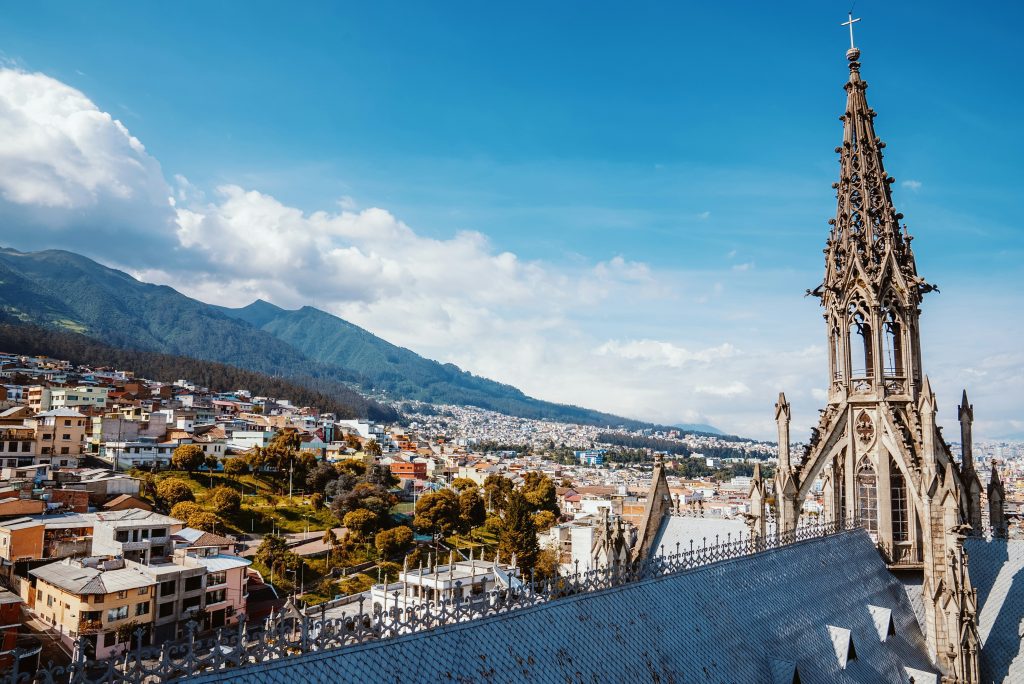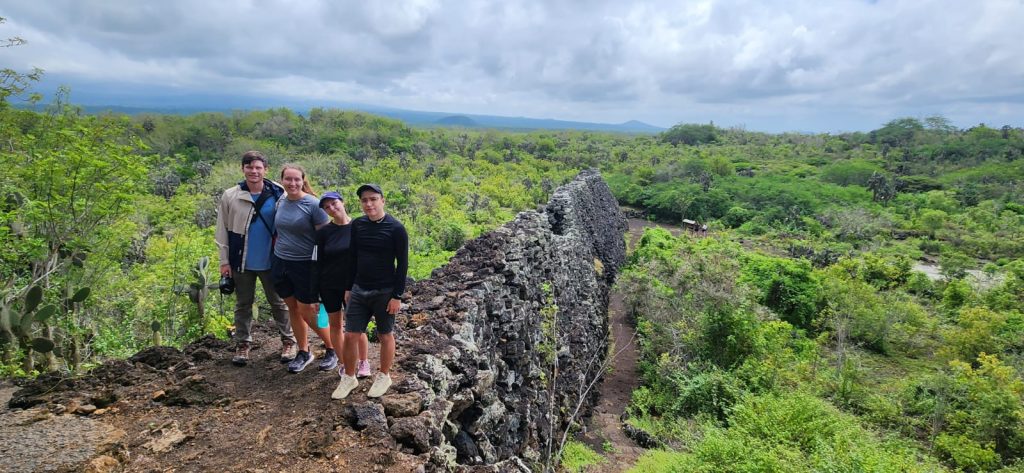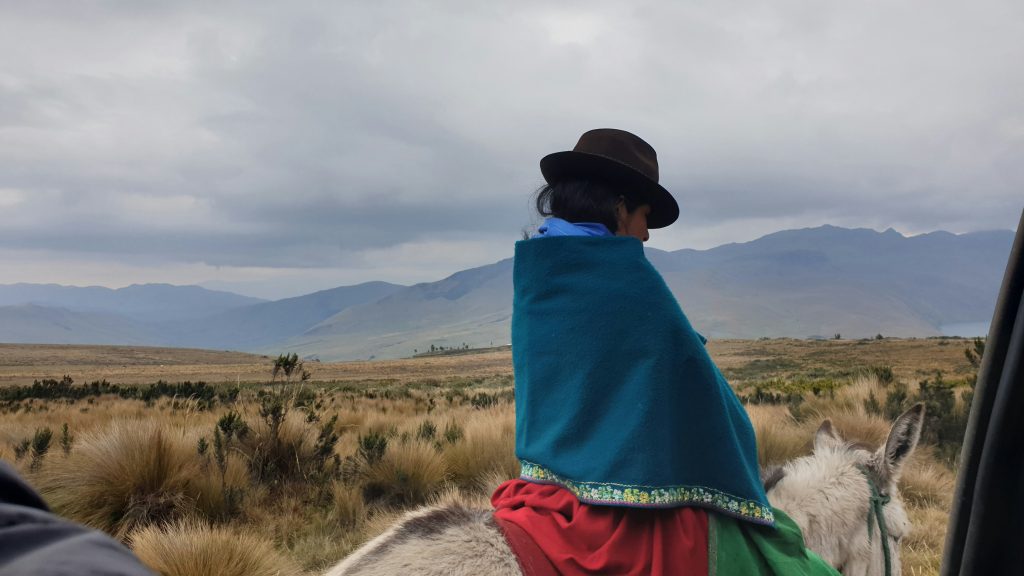
Updated: January 2025 – Estimated reading time: 5 minutes – Written by Michael and Alex
Have you ever wondered why so many people visit Mexico and Colombia despite being considered some of the most risky destinations in the world? It’s simple, they know their limitations and have prevented misconceptions from perpetuating. It’s important to consider that safety can vary within a country, and generalizations can bolster misconceptions. That is why it is essential to understand the situation thoroughly before making up your mind. After spending the last few months investigating and talking to our latest travelers about this issue, we’d like to offer a fresh perspective on safety in Ecuador. So the big question is…
Is Ecuador Safe for Travelers?
Ecuador, like any other country, has areas that are best avoided. Certain regions where organized crime operates aren’t recommended like the southern areas of Guayaquil or the northern area of Esmeraldas province. However, Ecuador’s most popular tourist spots, such as the Amazon and Galapagos, remain safe for travelers. Even in larger cities like Quito and Cuenca, travelers can navigate safely by sticking to well-known areas and avoiding certain neighborhoods.


What Makes Ecuador Safe?
The Protected Tourist Areas: Many tourist hubs, like the Galapagos and the Amazon, are well-patrolled and focus on ensuring visitor safety. Each national park and reserve area belongs to the SNAP (Protected Areas National System) where autorized guides and staff will verified the information of anyone entering these sites.
Towns across Ecuador are known for their strong community bonds and a commitment to keeping their spaces safe, especially in the Andes region and small towns such as Mindo, Baños, or Ambato. Many hotels and tourist service companies belong to 24/7 online groups where they keep informed about any given situation so they can provide updated information to tourists.Common-Sense Precautions: Avoiding high-risk areas and staying aware of your surroundings can ensure a smooth, enjoyable trip. We recommend joining travel forums and following travel accounts to listen the experiences from other travelers and locals alike. You can also contact us at Takiri Travel, our team is on constant communication with our travel partners around the country to get the latest updates.
Misconceptions About Ecuador’s Safety
The idea that the entire country is broadly unsafe couldn’t be further from the truth. The reality is that most of Ecuador remains welcoming and secure, especially for travelers. By steering clear of high-crime zones and engaging with local communities, travelers can experience Ecuador’s rich culture without fear. Many Ecuadorian towns are characterized by a strong sense of community, vibrant cultural traditions, and local efforts to maintain safety and order. The country’s tourism hubs and hotspots are heavily patrolled and secured due to the industry’s importance to Ecuador’s economy.


What About the Galapagos, Is It Safe?
The Galapagos Islands, located approximately 600 miles (1,000 km) from Ecuador’s mainland, is a remote paradise, far removed from the bustling crowds of urban areas. Unlike mainland Ecuador, the pristine archipelago offers a sanctuary free from the worries of organized crime and civil unrest.
For those dreaming of exploring the iconic Enchanted Islands, rest assured that this UNESCO World Heritage site boasts not only unparalleled natural beauty but also an exceptionally low crime rate due to limited exit points and rigorous entry requirements. In fact, the Governing Council of Galapagos recently implemented updated entry requirements to prioritize the safety and well-being of both visitors and inhabitants alike so every person entering the islands will now need to justify with verified documentation.
Why You Can Feel Safe in the Galapagos
Secure Environment: Its secluded location and limited access ensure a secure environment for all visitors. Whether you’re strolling along pristine beaches or snorkeling in crystal-clear waters, you can relax and enjoy the beauty of nature without distraction.
Trusted Local Guidance: Your local travel agency is there to guide you every step of the way. From personalized itineraries to insider tips on safe exploration, your travel agency is there to help you make an unforgettable Galapagos experience.
Community Unity: The Galapagos community is known for its strong sense of unity and hospitality. From the moment you arrive, you’ll be welcomed with open arms by locals who take pride in sharing the wonders of our islands with visitors.
You might also like: Island Hopping vs. Cruising the Galapagos Islands
Tips for Traveling Safely in Ecuador
While Ecuador is a beautiful and culturally rich country, it’s important to be aware of the current crime situation and take precautions to ensure a safe and enjoyable trip. It’s essential to note that most travelers have safe and trouble-free experiences. The key to a successful journey lies in being informed and taking the necessary precautions:
Research Your Destination: Research the areas you plan to visit in advance, paying attention to safety recommendations and recent travel advisories issued by relevant authorities. The U.S. Department of State and other government websites often provide up-to-date safety information: UK Official Ecuador Travel Advice and Canada Official Travel Advice.
Stay in Safe Neighborhoods: When booking accommodation, choose reputable hotels or guesthouses in well-established and safe neighborhoods. This can significantly reduce your risk of encountering security issues. You can contact our team to double-check any information or questions you might have regarding accommodation and recommended areas.
Use Licensed Tour Operators: When exploring the natural wonders of Ecuador, such as the Galapagos Islands, ensure you book tours and activities with licensed and reputable tour operators to avoid scams. You can verify their credentials to guarantee a safe experience and don't hesitate to ask as many questions you have.
Keep Valuables Secure: Petty theft, like pickpocketing, can occur in busy tourist areas in bigger cities. Use a money belt, anti-theft bags, or hidden pouches to secure your valuables. If you're traveling by public bus, we recommend to keep your belongings close and don't put them on top of your seat.
Be Aware of Your Surroundings: Avoid displaying expensive jewelry or electronics, and be cautious when using your smartphone in public. Stay aware of your surroundings and keep an eye on your belongings. At Quito and Guayaquil airports you can find lugagge custody services and many hostels also can charge an small amount to secure your valuables when traveling.
Use Official Transportation: When using taxis or other forms of public transportation, opt for authorized and registered services inside the airport or bus terminals. In larger cities like Quito and Guayaquil, ride-sharing apps like Uber can provide a safe alternative. In many big cities such as Cuenca or Quito, there are tourist bus companies with specific departure dates and times, this option is the most preferable to have a nice a safe trip on the road.
Learn Some Basic Spanish: While many Ecuadorians working in the tourism industry speak English, knowing some basic Spanish phrases can be incredibly helpful in case of emergencies or when seeking assistance.
Travel Insurance: Comprehensive travel insurance is always a smart idea in case of unexpected events, medical emergencies, and lost items. It's a safety net that can provide peace of mind. Many credit card holders includes travel insurance or at least some items when traveling, make sure to contact them to get more information.
How Your Visit Helps Protect Ecuador's Future


By choosing to visit Ecuador and the Galapagos—and especially by joining one of our Takiri Travel tours—you’re doing far more than just ticking off a bucket-list destination. You’re becoming a vital part of a movement that helps protect our natural wonders and uplift local communities. Every trip helps sustain conservation efforts in delicate ecosystems, like the Amazon and the Galapagos, ensuring that wildlife thrives for future generations. But the impact goes beyond nature—your travel dollars empower local artisans, guides, and families, improving their quality of life and offering an alternative to illegal activities. In areas where crime and gangs are often seen as the only option, tourism provides a positive and sustainable income, helping locals preserve their traditions and stay connected to their roots. You’re not just a traveler—you’re an agent of change, helping to create a safer, more vibrant future for Ecuadorians. So, when you explore with us, you’re making a difference in ways you can’t even imagine.
Conclusion: Explore Ecuador and the Galapagos with Confidence
Ecuador, with its stunning landscapes, vibrant culture, and welcoming communities, remains a safe and worthwhile destination for travelers. The Galapagos Islands, in particular, offer a paradise of serenity and adventure. By following some basic safety measures, you’ll be able to fully immerse yourself in all the magic these places offer.
So pack your bags, trust the journey, and get ready to create unforgettable memories. Whether you’re trekking through the Amazon or snorkeling in the Galapagos, the adventure of a lifetime awaits.
Ready to explore Ecuador and the Galapagos? Start planning your adventure with Takiri Travel and let us guide you through this incredible destination, ensuring a safe, thrilling, and unforgettable experience!
